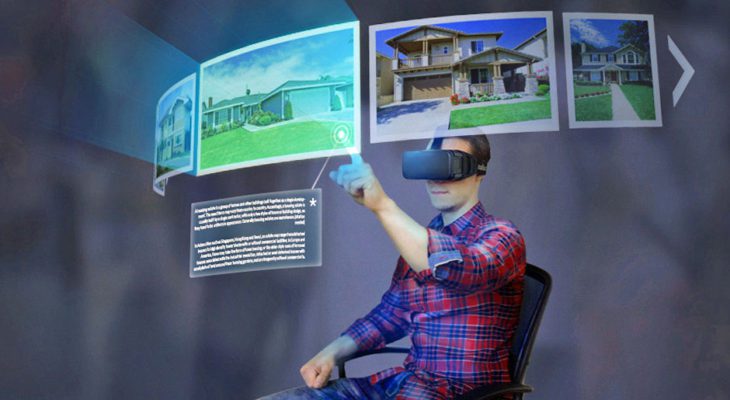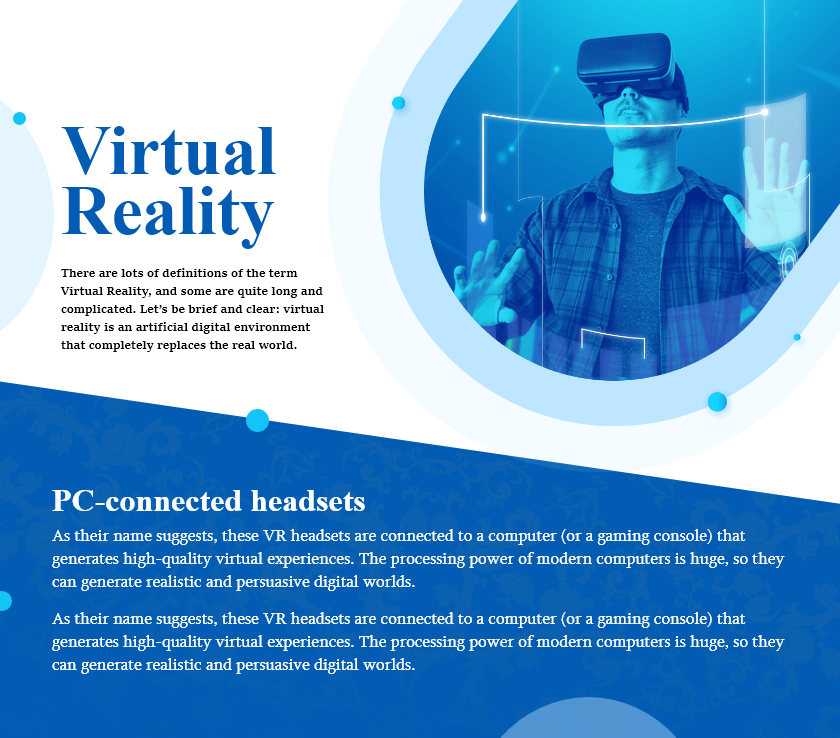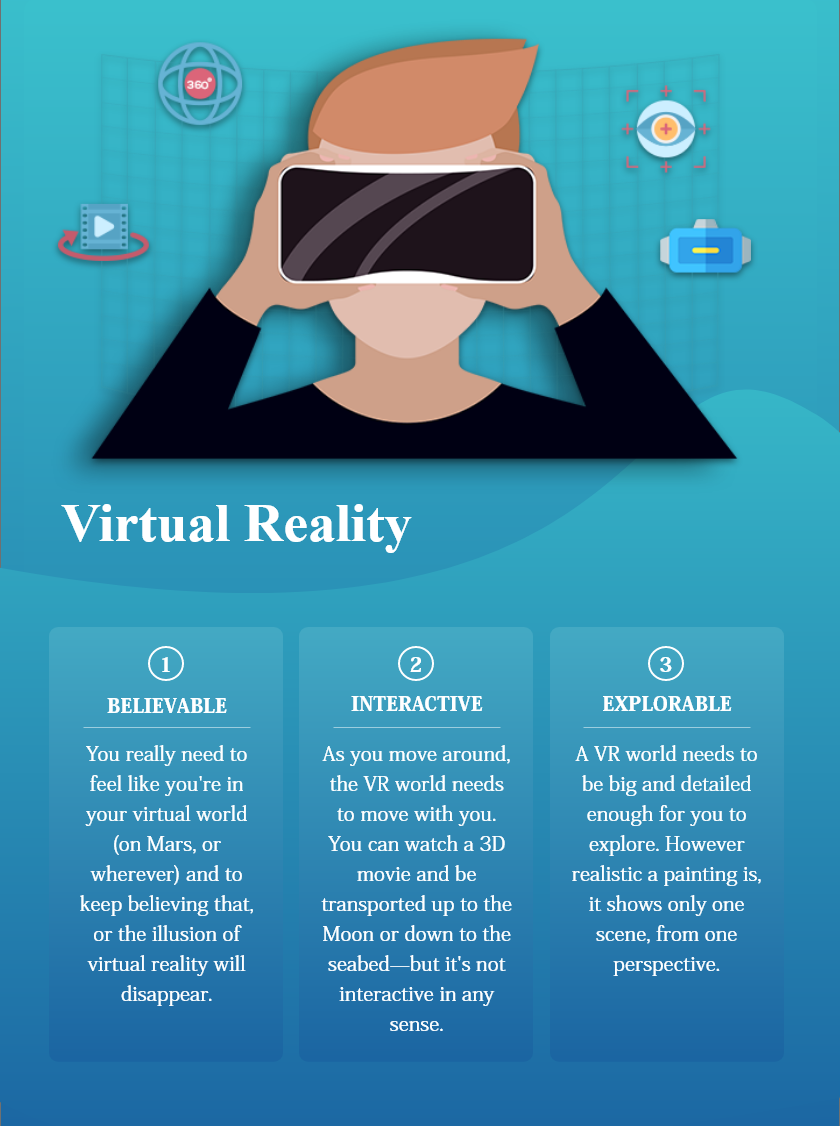Leading Mobile & web Development company which is providing Ready to publish apps & on demands application in Global Bussiness.
- 908, B Square 2, Ambli Rd, near Hotel Double tree Hilton, Vikram NagarAhmedabad-380054, Gujarat, India
- (+91) 8758432204Give us a call
- contact@initiotechmedia.com24/7 online support

Virtual Reality
- Keyur Mavadiya
- July 27, 2019
- 0
Virtual reality (VR) is a simulated experience that can be similar to or completely different from the real world.
Applications of virtual reality can include entertainment (i.e. gaming) and educational purposes (i.e. medical or military training). Other, distinct types of VR style technology include augmented reality and mixed reality.

Currently standard virtual reality systems use either virtual reality headsets or multi-projected environments to generate realistic images, sounds and other sensations that simulate a user’s physical presence in a virtual environment. A person using virtual reality equipment is able to look around the artificial world, move around in it, and interact with virtual features or items. The effect is commonly created by VR headsets consisting of a head-mounted display with a small screen in front of the eyes, but can also be created through specially designed rooms with multiple large screens. Virtual reality typically incorporates auditory and video feedback, but may also allow other types of sensory and force feedback through haptic technology.
What are the two main types of virtual reality? Jacobson (1993a) suggests that there are four types of virtual reality: immersive virtual reality; desktop virtual reality (i.e., low cost homebrew virtual reality); projection virtual reality; and simulation virtual reality.
What is the purpose of virtual reality?
Virtual Reality helps us with modeling the World. Fabien Benetou, Made several virtual worlds including networked, with physics, etc. The purpose of VR is to transport the person experiencing it to another world
What is difference between VR and AR? Whereas virtual reality replaces your vision, augmented reality adds to it. … While VR completely covers and replaces your field of vision, AR apps only show up on your smartphone or tablet screen, and even the HoloLens can only project images in a limited area in front of your eyes

What are the side effects of virtual reality?
The Negative Side Effects Of Virtual Reality Loss of Spatial Awareness. This one is super obvious and seems a simple fix: just be aware of the space around you before you put on the goggles. … Dizziness and Disorientation. This is going to vary, just as it would with any sort of anything in life. … Seizures, Nausea, Eye Soreness.
WhatsApp us

